You go to war with the army you have, not the army you might want or wish to have at a later time.
Donald H. Rumsfeld, Dec. 14, 2006
Ben Jackel, stoneware and beeswax, 2008
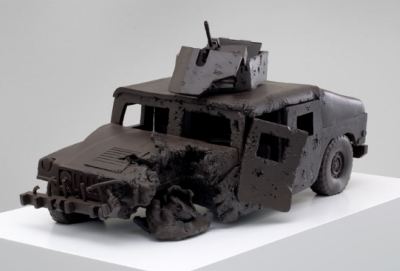
Regina Hackett takes her Art to Go
You go to war with the army you have, not the army you might want or wish to have at a later time.
Donald H. Rumsfeld, Dec. 14, 2006
Ben Jackel, stoneware and beeswax, 2008

Seattle’s Dawn Cerny, as part of the exhibit at 4Culture. Her flags revel in local resentments, defunct businesses and crackpots.
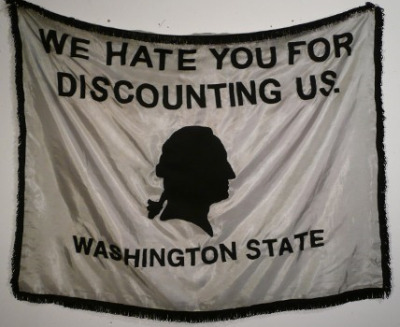

 Jack Daws is into home craft. Below, he pickles old glory.
Jack Daws is into home craft. Below, he pickles old glory.
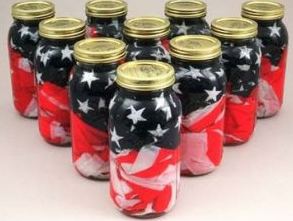 Costa Vece – from the coffin of lost causes.
Costa Vece – from the coffin of lost causes.
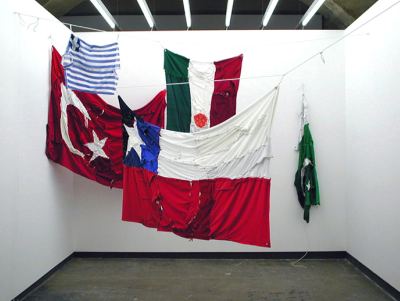 Harmon de Hoop– red, white and blue product under a red, white and blue grid.
Harmon de Hoop– red, white and blue product under a red, white and blue grid.
 Ed Templeton – American Pride for Sale. Looks like a good thing to me.
Ed Templeton – American Pride for Sale. Looks like a good thing to me.
Spiegelman’s St. Louis Refugee Ship Blues is stellar. Nobody treads in the dark with as light a touch. Example, his final frame:
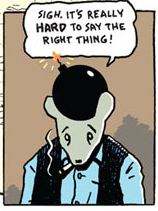 He’s referring to what Danish Prime Minister Anders Fogh Rasmussen called his country’s worst international crisis since World War II, here. In Seattle, only the Stranger ran the cartoons in question.
He’s referring to what Danish Prime Minister Anders Fogh Rasmussen called his country’s worst international crisis since World War II, here. In Seattle, only the Stranger ran the cartoons in question.
To this post – In a dry season, what blooms out the back end? – Eric Fredericksen added the essential Naomi Fisher. Thanks, Eric!

At the press preview for the Seattle Art Museum’s small but choice Wyeth exhibit, Remembrance, exhibit curator Patricia Junker said Wyeth was the figure whom the international crew of artists featured in Michael Darling’s Target Practice: Painting Under Attack (1949-78) had in mind.
Both exhibits open tomorrow. (Target Practice reviews to follow.)
Wyeth’s admirers try to insinuate him into the thick of things. For the artists in Target Practice, however, he wasn’t on the firing range. Rauschenberg erased a de Kooning. Andrew Wyeth? His name did not come up.
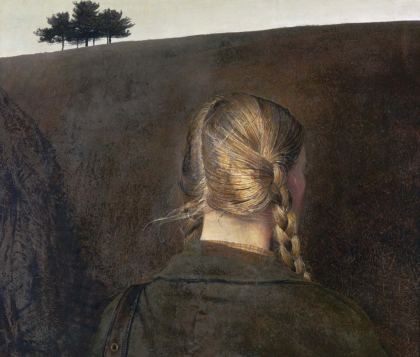 Wyeth backed himself into a corner of a particular place rooted in land and family and painted his fear of the world. With a desperate and dry exactitude, he documented every inch of what mattered to him. He aimed for sentimentality but didn’t get there.
Wyeth backed himself into a corner of a particular place rooted in land and family and painted his fear of the world. With a desperate and dry exactitude, he documented every inch of what mattered to him. He aimed for sentimentality but didn’t get there.
His idea of the beautiful is dead-on-arrival, but his depiction is the equivalent of Miss Havisham preserving her cake.
Take Farm Road, above. (1979, Tempera on masonite, 21 inches high by 25 1/4 inches wide. Private collection.) Rembrandt-light shines on the greasy hair of his model, gray and brown at its roots and brass in its braids. Is the farm road in the title the rigid path of her hair? There is no other.
The rusted iron ground that rises in front of her blocks her progress. She’s right where he wants her, under his surveil, every hair on her head counted. Above, where she isn’t looking, the flat light of another dull day rises against a horizon line broken by a cluster of trees.
Wyeth is the American version of Edvard Munch, literal where Munch is flowing but tapping into the same emotional territory. Wyeth’s scream is that there is no scream. He’s the painter of a vast suppression, what it took for him to pass for normal in the countryside.
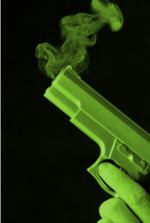 Death does not have to hang heavy in your head for you to be a fan of Obit. (I’m a fan, and I’m singing a happy tune as I type this. Worms crawl in, worms crawl out...)
Death does not have to hang heavy in your head for you to be a fan of Obit. (I’m a fan, and I’m singing a happy tune as I type this. Worms crawl in, worms crawl out...)
Fellow AJ blogger, Jeff Weinstein, contributes to the site, most recently with a fine piece titled Hidden Memorials, on ephemeral Sufi shrines in the desert.
All that is by way of saying Obit’s Top 10 List of Stupid Death Tricks is not just anybody’s death-trick list.
Number 3, for example:
A prop can still be a deadly weapon.
Actors on Hollywood sets are routinely warned to be careful with guns used as props, but in 1984, Jon-Erik Hexum, a star of the CBS action series Cover-Up, pretended to play Russian roulette by putting a blank-loaded .44 Magnum to his temple. “Let’s see if this will do it,” he reportedly said, and pulled the trigger. The burst of hot gas fired at close range penetrated his skull.
I’d like to read a top ten list of stupid death tricks that didn’t work. Chris Burden in his reckless youth would loom large on it, when he attempted to electrocute himself, and had himself shot, nailed to a VW bug and stuffed into a sack left in traffic. The trick here, in the format of a top 10 list, would be to convey to an undifferentiated audience why everything he did continues to matter so much, to not make a joke out of some of art’s most soulful moments.
Who’s the link, lifeline, thread and thing to be scorned? He opened the door for the grandiose and unruly, for those whose hearts have (Pascal’s phrase) reasons that reason cannot know. The artists below are among many in his debt.
 Titus Kaphar
Titus Kaphar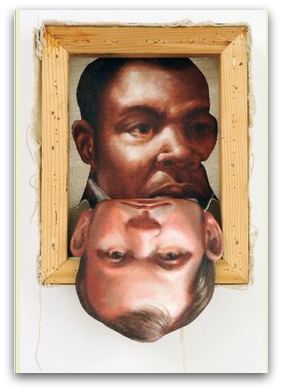 Dan Webb (Hold)
Dan Webb (Hold)
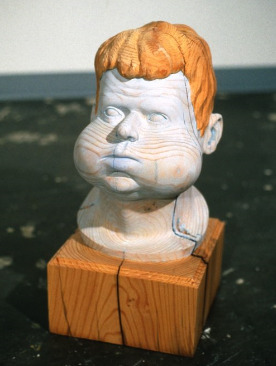 Mike Simi (Self-Portrait)
Mike Simi (Self-Portrait)
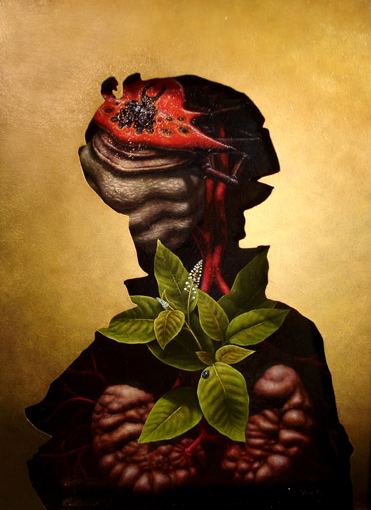 The answer is, of course, Mr. Elaborately Ceremonial.
The answer is, of course, Mr. Elaborately Ceremonial.

an ArtsJournal blog


